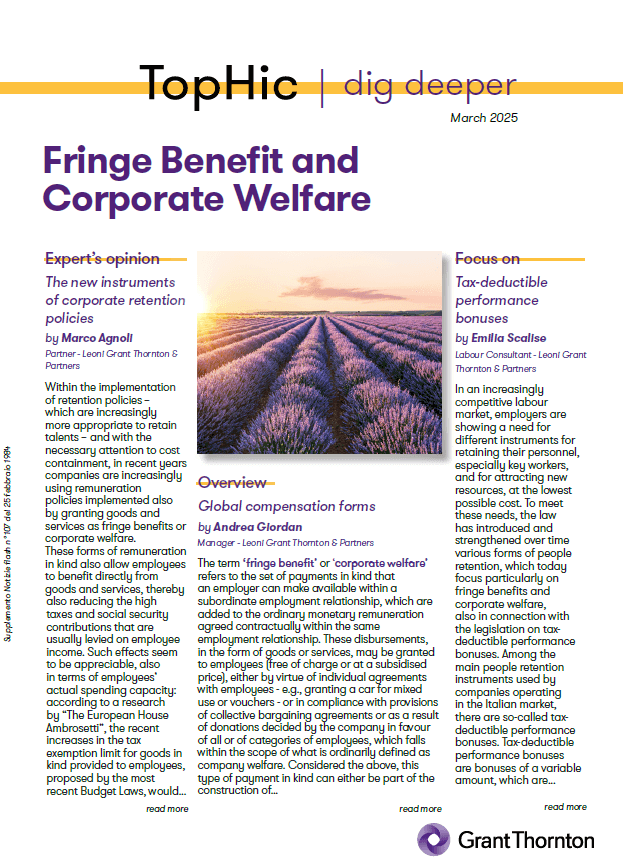-
Transactional advisory services
Find out more about the transactional advisory services of Grant Thornton Financial Advisory Services
-
Valuations
Find out more about the valuations services of Grant Thornton Financial Advisory Services
-
Mergers and acquisitions
Find out more about the merger and acquisition services of Grant Thornton Financial Advisory Services
-
Forensic and investigation services
Find out more about the forensic and investigation services of Grant Thornton Financial Advisory Services
-
Recovery & reorganisation
Find out more about the Recovery & reorganisation services of Grant Thornton Financial Advisory Services
-
Business risk services
Find out more about the business risk services of Grant Thornton Financial Advisory Services
-
Business consulting
Find out more about the business consulting services of Grant Thornton Financial Advisory Services
-
Capital market
Capital market
-
Corporate and business tax
Find out more about our corporate and business tax services.
-
Direct international tax
Find out more about our direct international tax services.
-
Global mobility services
Find out more about our global mobility services.
-
Indirect international tax
Find out more about our indirect international tax services.
-
Transfer pricing
Find out more about our transfer pricing services.
-
Litigation
Our lawyers and accountants can manage all defense measures provided not only by the Italian law, but also by EU regulations and conventions
-
Family business
Find out more about our Family business services.
-
Legal
The client can be assisted in every need and with the same care both on important operations or disputes and on simple matters

-
Back office outsourcing
Find out more about our Back office outsourcing services
-
Business process outsourcing
Find out more about our business process outsourcing services.
-
Compilation of financial statements
Find out more about our compilation of financial statements services.
-
Tax compliance
Find out more about our tax compliance services.
-
Electronic invoicing
Find out more about our electronic invoicing services
-
Electronic storage
Electronic storage is an archiving procedure that guarantees the legal validity of a digitally stored electronic document
-
Revaluation of corporate assets
Find out your civil and fiscal revaluation of tangible, intangible and financial assets
-
Human resources consulting
Find out more about our human resources consulting services.
-
Payroll
Find out more about our payroll services.
-
HR News
HR News the monthly information newsletter by Grant Thornton HR
-
Cybersecurity
GT Digital helps clients structure information security management internal functions, also through partially or totally outsourced functions
-
Agile and Programme Management
GT Digital provides support in the adoption and implementation of different portfolio management
-
Robotic Process Automation
Our “BOT Farm” can rely on digital workers able to help clients in routine activities, allowing employees to deal with more added-value activities
-
Data strategy and management
GT Digital can support clients in seizing the opportunities offered by Big Data, from the definition of strategies to the implementation of systems
-
Enterprise Resource Planning
We support clients in selecting the most appropriate ERP System according to their specific needs, helping them also understand licensing models
-
IT strategy
GT Digital supports clients in making strategic choices, identifying innovation opportunities, comparing themselves with competitors
-
IT service management
We can support with software selection and with the implementation of dedicated tools for the management of ICT processes
-
DORA and NIS 2
The entry into force of the DORA Regulation and NIS2 represents a major step towards the creation of a harmonised regulatory framework

Within the implementation of retention policies – which are increasingly more appropriate to retain talents – and with the necessary attention to cost containment, in recent years companies are increasingly using remuneration policies implemented also by granting goods and services as fringe benefits or corporate welfare.
These forms of remuneration in kind also allow employees to benefit directly from goods and services, thereby also reducing the high taxes and social security contributions that are usually levied on employee income.
Such effects seem to be appreciable, also in terms of employees' actual spending capacity: according to a research by “The European House Ambrosetti”, the recent increases in the tax exemption limit for goods in kind provided to employees, proposed by the most recent Budget Laws, would have led to an estimated increase in household consumption by 0,8%.
However, despite the above considerations and the incentive value of these measures, companies are required to carefully assess the measures to be applied, in order to avoid undermining (or even annulling) the effects of the policies adopted.
In fact, the provision of goods or services in kind presumes an in-depth knowledge of the company population, both in terms of family expectations and needs – given the ‘welfare’ nature that characterises large part of the benefits granted that do not contribute to the calculation of taxable employment income – and of subjective criteria, for the purposes of an effective application of the non-taxability limits of fringe benefits.
In this sense, it is fundamental – for the purposes of an effective use of such instruments – to provide a clear definition of what is considered ‘fringe benefit’ and what is ‘corporate welfare’.
These are, in fact, Anglo-Saxon terms which do not find full correspondence in the Italian system, with varying effects from a tax and social security contribution perspective.
If we had to make a distinction, we could consider as ‘corporate welfare’ that set of company goods and services that can be provided in relation to all or categories of employees and that - for this reason, in line with the position of the Italian Revenue Office – have a welfare rather than properly remunerative character.
On the other hand, ‘fringe benefit’ frequently refers to the provision of goods and services with a more marked remunerative nature and which, in compliance with regulatory provisions, can also be recognised ad personam, thus representing a more agile remuneration instrument that can also be used to build a remuneration package for specific employees.
Per dare un’idea di massima, possono rientrare – a titolo esemplificativo – nella fattispecie del welfare aziendale:
Therefore, while the recognition of fringe benefits is ordinarily based on individual agreements entered into by the employer and the employee (regardless of whether they are reached at the time of hiring or later, during the employment relationship), corporate welfare is, as a rule, instituted and regulated by collective agreements or internal regulations.
To provide a general overview, the following may be included - by way of example – among corporate welfare measures:
- Contributions to supplementary healthcare funds;
- Collective transport service provisions;
- Refund of local public transport tickets;
- Use of works and services for education, training, recreation, social and health care, or worship purposes;
- Amounts, services, and provisions granted for the use of education and training services by family members, as well as for access to recreation centres and summer and winter camps, and for scholarships;
- Amounts and provisions granted for accessing assistance services to elderly family members non-self-sufficient family members;
- Contributions and premiums paid for provisions, including insurance, relating to the risk of non-self-sufficiency in the performance of daily activities or relating to the risk of serious diseases.
On the other hand, the following are included among fringe benefits:
- Goods and services provided in kind;
- Granting of mixed-use cars;
- Granting of loans;
- For the three-year period 2025-2027, amounts issued or reimbursed by the employer for the payment of household utilities relating to the integrated water service, electricity and natural gas, as well as of expenses for renting or for mortgage loan interest of the main dwelling.
It should also be pointed out that, while corporate welfare does not contribute entirely to the calculation of employment income, fringe benefits must be considered for such calculation, at their ‘normal’ or ‘conventional’ value and, when a cumulative statutory exemption limit is exceeded, they are fully taxable.
In this regard, it is highlighted that in recent years this limit, ordinarily set at €258.23 per year (a value, in our opinion, excessively low and annulling the effectiveness of fringe benefits) has been subject to continuous, albeit temporary, increases, up to the current limit – for the three-year period 2025-2027 – of €1,000 per year for all employees or €2,000 per year for employees with dependent children.
It is quite evident how the overall picture described is extremely complex and how, consequently, companies and HR managers may be discouraged from adopting such complementary remuneration.
Therefore, the opportunity to rely on professional figures, such as labour consultants, should be considered, since thanks to their specific skills they can effectively assist companies in the construction of company welfare policies and in granting fringe benefits, to take full advantage of the opportunities offered by the current system.
